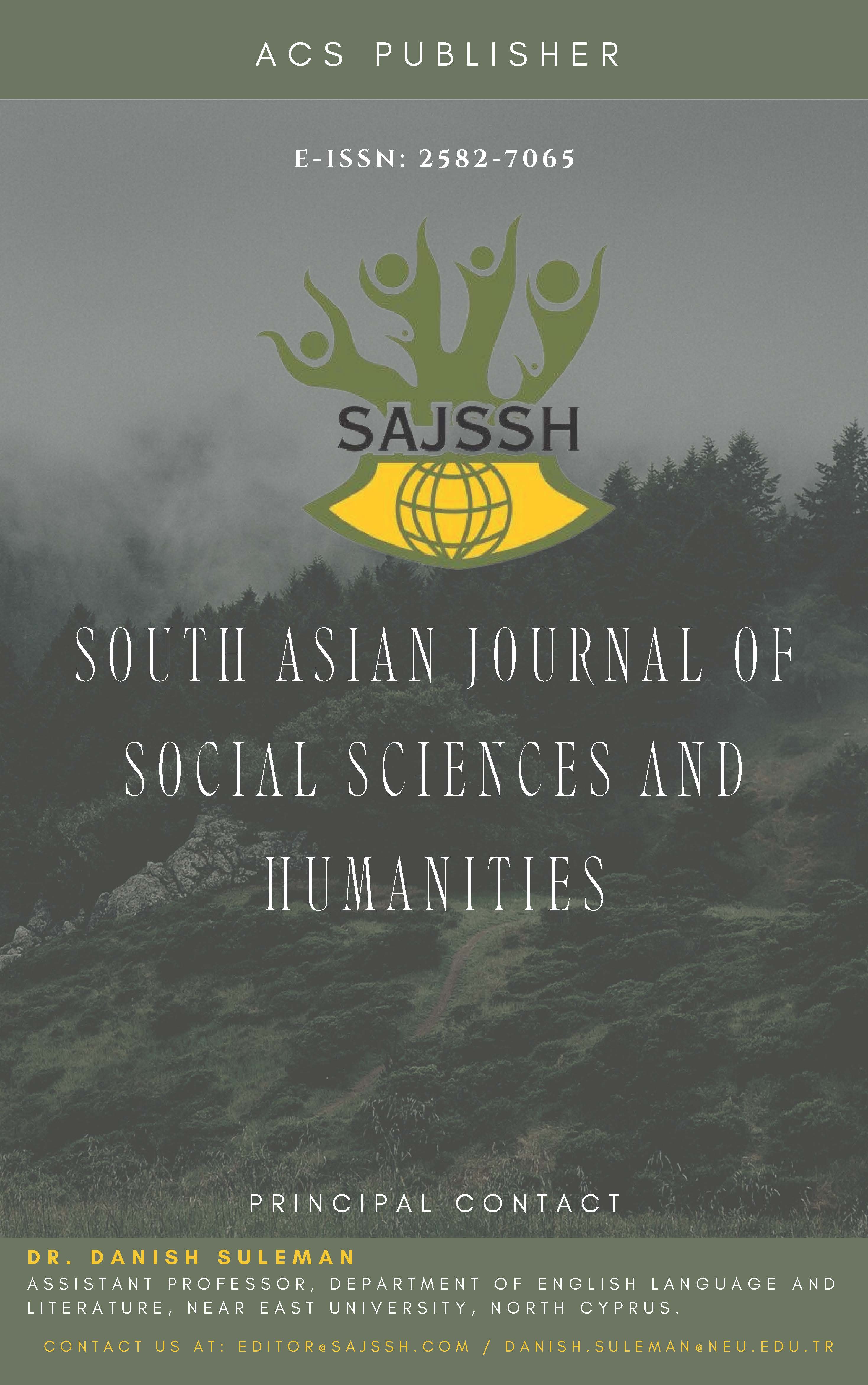Natural Disaster Management Knowledge and Practices of the Rural Communities in Bangladesh
DOI:
https://doi.org/10.48165/sajssh.2024.6401Keywords:
Natural disaster, disaster management, disaster preparedness, community awarenessAbstract
This study aims to assess disaster management knowledge and practices among rural residents in four communities of Pabna and Sirajganj Districts, Bangladesh. A survey of 180 households was conducted to collect data. Respondents were randomly selected for interviews without regard to religion or ethnicity. Multistage sampling identified respondents using a structured questionnaire for data collection. Six key informant interviews (KII) were conducted to gather qualitative data. Participants included local social elites, religious leaders, government agencies, and NGOs. Eight case study methods were employed to gather data on natural disasters over time. Each FGD session involved eight to twelve attentive respondents with comparable backgrounds who shared their opinions. The emphasis was on acquiring factual and valuable information verified against other sources. Facilitators employed a discussion guide and documented the proceedings. Data entry was conducted using MS Access, while SPSS-20 was employed for data tabulation. The study indicated notable enhancements in individuals' knowledge, practices, and awareness regarding disaster preparedness, including food preservation, financial savings, secure document storage, and awareness of nearby safe shelters. The study indicated notable enhancements in disaster preparedness, early warning systems, coping strategies, and health and hygiene practices. 98.3% of respondents received early warning messages during floods, whereas only 25% did so. Neighbours and family members were the primary sources of early flood warnings. Research shows that communication media is essential in managing natural disasters. The government should implement initiatives to enhance community awareness of natural disasters and offer disaster preparedness training.
References
Aldrich, D. P. (2012). Building resilience: Social capital in post-disaster recovery. University of Chicago Press.
Bangladesh Bureau of Statistics (BBS). (2021). Bangladesh disaster-related statistics (BDRS) 2021: Climate change and natural disaster perspectives.
Bangladesh Bureau of Statistics (BBS). (2022). Population and housing census 2022.
Brody, S. D., Kang, J. E., & Bernhardt, S. (2010). Identifying factors influencing flood mitigation at the local level in Texas and Florida: The role of organizational capacity. Natural Hazards, 52(2), 167–184. https://doi.org/10.1007/s11069-009-9364-5
Cutter, S. L., Burton, C. G., & Emrich, C. T. (2010). Disaster resilience indicators for benchmarking baseline conditions. Journal of Homeland Security and Emergency Management, 7(1), Article 51. https://doi.org/10.2202/1547-7355.1732
Janssen, D. (2006). Disaster planning in rural America. Public Manager, 35(3), 40–43.
Kapucu, N., Hawkins, C., & Rivera, F. I. (2013). Emerging research in disaster resiliency and sustainability: Implications for policy and practice. In N. Kapucu, C. Hawkins, & F. I. Rivera (Eds.), Disaster resiliency: Interdisciplinary perspectives (pp. 355–358). Routledge.
Lindell, M. K., Prater, C. S., & Perry, R. W. (2007). Introduction to emergency management. Wiley.
Longstaff, P. H., Armstrong, N. J., Perrin, K., Parker, W. M., & Hidek, M. A. (2010). Building resilient communities: A preliminary framework for assessment. Homeland Security Affairs, 6(3), 1–23.
National Research Council (NRC). (2009). Applications of social network analysis for building community disaster resilience. The National Academies Press.
Norris, F. H., Stevens, S. P., Pfefferbaum, B., Wyche, K. F., & Pfefferbaum, R. L. (2008). Community resilience as a metaphor, theory, set of capacities, and strategy for disaster readiness. American Journal of Community Psychology, 41(1–2), 127–150. https://doi.org/10.1007/s10464-007-9156-6
Paton, D. (2007). Measuring and monitoring resilience in Auckland (GNS Science Report 2007/18, 88 p.). Auckland CivilDefence. http://www.civildefence.govt.nz
(accessed December 10, 2012)
Practical Action Bangladesh. (2007). A study on people’s empowerment through decentralized knowledge development and management: Final technical report. Practical Action Bangladesh.
Sherrieb, K., Norris, F. H., & Galea, S. (2010). Measuring capacities for community resilience. Social Indicators Research, 99(2), 227–247. https://doi.org/10.1007/s11205-010-9576-9
United Nations International Strategy for Disaster Reduction (UNISDR). (2009). UNISDR terminology on disaster risk reduction. https://www.unisdr.org/we/inform/terminology
Waugh, W. L. (2013). Management capacity and rural community resilience. In N. Kapucu, C. Hawkins, & F. Rivera (Eds.), Disaster resiliency: Interdisciplinary perspectives (pp. 291–307). Routledge.
World Health Organization (WHO). (2000). Guidelines for drinking-water quality (2nd ed.). World Health Organization.
World Health Organization (WHO). (2000). Arsenic in drinking water: Fact sheet. World Health Organization.
Wisner, B., Blaikie, P., Cannon, T., & Davis, I. (2004). At risk: Natural hazards, people’s vulnerability, and disasters (2nd ed.). Routledge.
World Risk Report. (2015). World risk report 2015. United Nations University – Institute for Environment and Human Security (UNU-EHS).
Downloads
Published
Issue
Section
License
Copyright (c) 2025 South Asian Journal of Social Sciences and Humanities

This work is licensed under a Creative Commons Attribution 4.0 International License.





